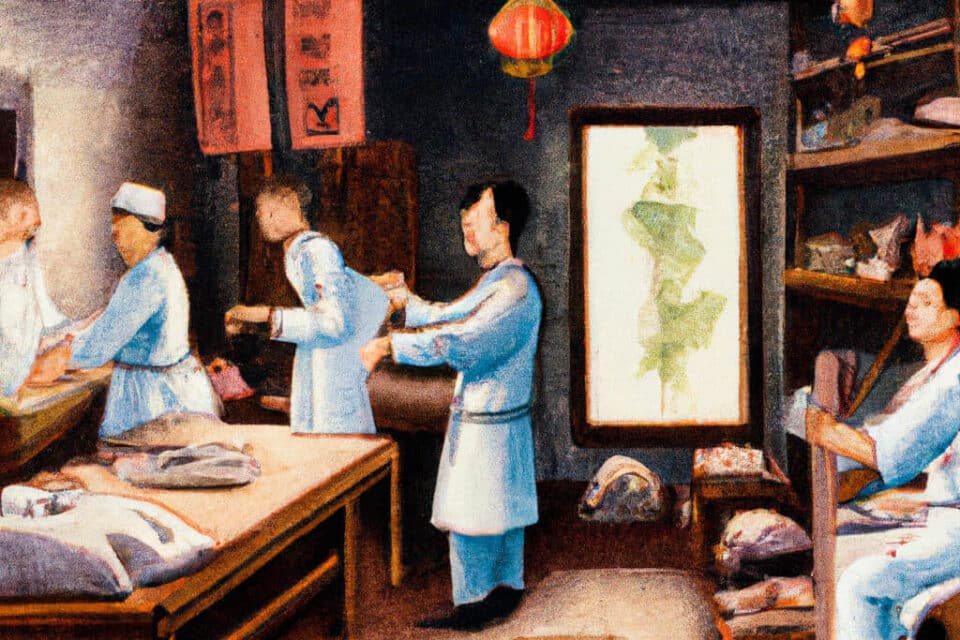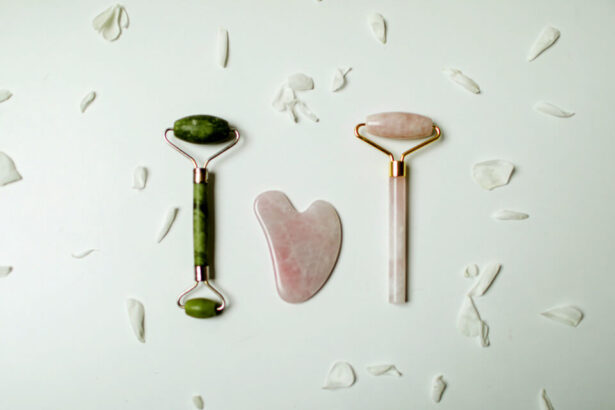Gua sha, also known as “scraping,” is an ancient Chinese healing technique that has been used for thousands of years to promote healing, reduce pain, and improve overall well-being. The practice involves scraping the skin with a smooth tool, typically made of stone, jade, or other materials, to stimulate blood flow and lymphatic drainage. Although gua sha has become more popular in recent years, its history and evolution are fascinating and deeply rooted in Chinese culture and tradition.
The origins of gua sha can be traced back to the Han dynasty in China, which lasted from 206 BC to 220 AD. At that time, people used animal bones, jade, or other materials to scrape the skin to relieve pain and improve circulation. The practice was known as “ba gua” or “eight pieces of jade,” and it was believed to balance the body’s energy and promote healing.
During the Ming dynasty, which lasted from 1368 to 1644, gua sha became more widespread and was used to treat a wide range of conditions, from headaches and neck pain to digestive issues and respiratory problems. The technique was also used to prevent and treat diseases, and it was believed to be an effective way to maintain overall health and vitality.
Over time, gua sha evolved, and new tools and techniques were developed. In the Qing dynasty, which lasted from 1644 to 1912, gua sha was used to treat smallpox, which was a common and deadly disease at the time. The technique was so effective that it became a standard treatment for smallpox in China and other parts of Asia.
During the 20th century, gua sha continued to evolve, and it became more widely recognized as a valuable healing technique. In the 1950s, the Chinese government established traditional Chinese medicine (TCM) schools and hospitals, which helped to promote gua sha and other traditional healing practices. Today, gua sha is used by TCM practitioners all over the world to treat a wide range of conditions, from chronic pain and inflammation to respiratory problems and digestive issues.
One of the reasons that gua sha has become more popular in recent years is that it has been embraced by many Western wellness practitioners and celebrities. Gua sha is often used in combination with other techniques, such as acupuncture and acupressure, and it is believed to promote relaxation, reduce stress, and improve skin health.
Facial gua sha is a popular technique in the Western world. The practice involves using a smooth, flat tool made of jade, rose quartz, or other materials to gently massage the face, neck, and décolletage. This technique is said to help promote blood flow and lymphatic drainage, reduce inflammation, and improve skin tone and texture.
Facial gua sha is often used in combination with other skincare techniques, such as facial acupuncture, acupressure, and facial cupping. The combination of these techniques is believed to provide a range of benefits, including reducing the appearance of fine lines and wrinkles, reducing puffiness and dark circles, and promoting a healthy, radiant complexion.
Facial gua sha is a non-invasive and gentle technique that can be used by people of all skin types and ages. It is often used as an alternative to more invasive facial treatments, such as chemical peels or laser treatments, which can be harsh on the skin and require significant downtime.
Aside from its use in facial rejuvenation, gua sha is also used by Western healthcare practitioners to help relieve pain and tension in the body. It is often used in combination with other therapies, such as acupuncture or massage, to help promote healing and improve overall well-being.
Despite its long history, gua sha is still somewhat controversial, and some medical professionals are skeptical of its benefits. However, many people who have experienced the technique firsthand report significant improvements in their health and well-being.
Research on gua sha is still limited, but several studies have suggested that the technique may be effective in reducing pain, inflammation, and other symptoms associated with various health conditions. For example, a 2011 study published in the Journal of Pain found that gua sha was effective in reducing chronic neck pain in participants.
Another study, published in the Journal of Traditional Chinese Medicine, found that gua sha was effective in reducing symptoms of perimenopausal syndrome, including hot flashes, insomnia, and mood changes.
Although gua sha is generally considered safe, it is important to work with a qualified practitioner who has been trained in the technique. Gua sha can cause minor bruising and skin irritation, especially if the technique is applied too vigorously or for too long.
In conclusion, gua sha is an ancient Chinese healing technique that has evolved over thousands of years to become a valuable tool for promoting health and well-being in both the Eastern and Western worlds. While it has traditionally been used to relieve pain and promote healing, it is increasingly being used as a beauty and wellness tool in the Western world. As more people discover the benefits of Gua Sha, it is likely to continue evolving and becoming more widely used in the years to come.



